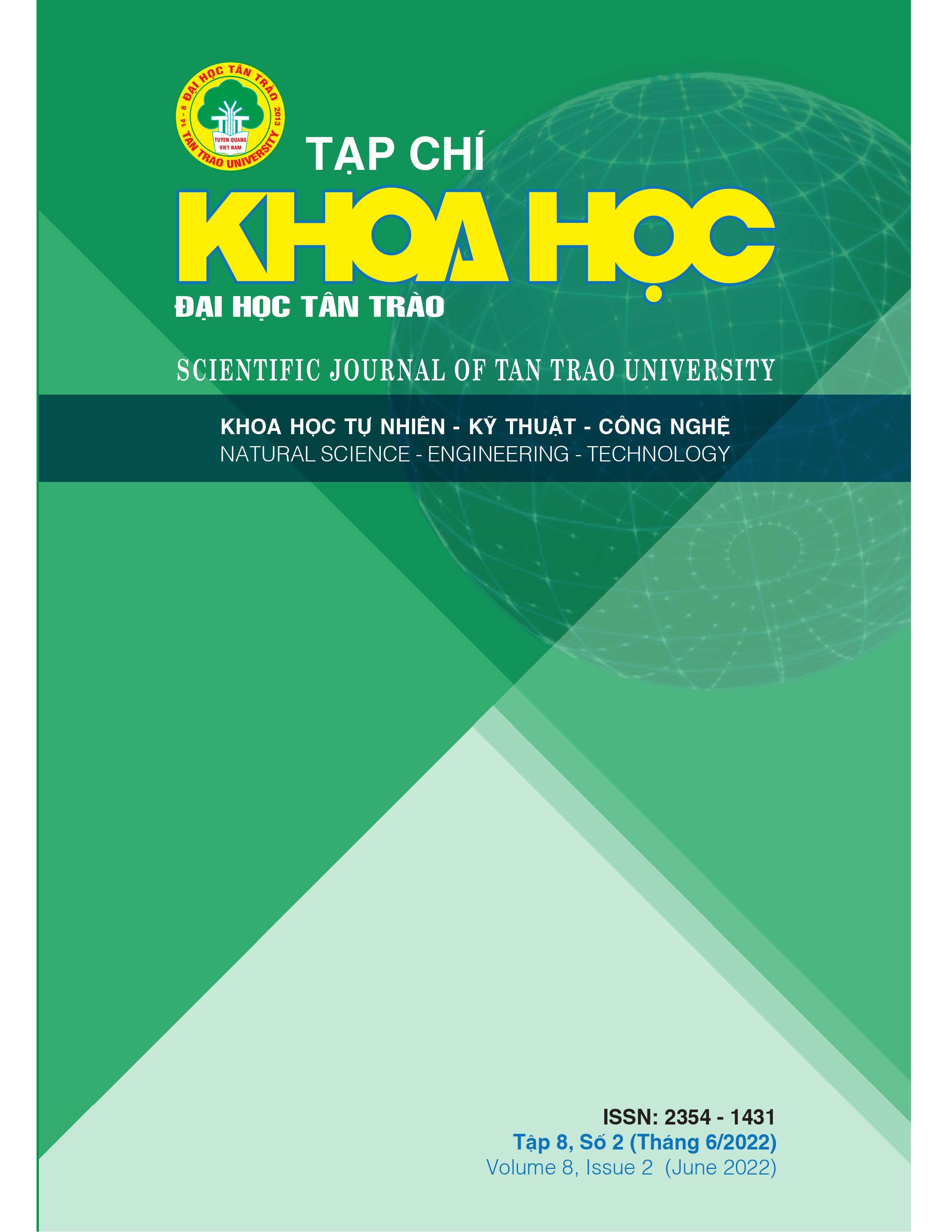OVERVIEW OF THE EFFECTS OF MICRO PLASTIC ON ZOOBENTHOS IN THE WORLD AND FIRST STUDIES IN VIETNAM
DOI:
https://doi.org/10.51453/2354-1431/2022/756Keywords:
Zoobenthos, Gastropoda, Crustacea, Bivalvia, MicroplasticsAbstract
Through synthesis, statistics show that the number of studies on microplastics in marine life in the world has increased rapidly in the past decade; there are many new studies on the presence, density and origin of microplastics, such as Taylor et al. (2016), Claudia Andrade và et al. (2017), Jamieson and et al. (2019). Effects of microplastics on marine life, food, excretion, reproduction of marine arthropods and marine ecology. Research on microplastics for other organisms (mollusks, shrimp, crabs, fish, seabirds, sea turtles). The first research on microplastics in Vietnam was by Phuong Ngoc Nam et al. (Effect of microplastics on green mussels). Followed by Nguyen Van Tai et al. (2020), the impact of microplastics on the vitality and reproduction of two crustaceans, Ceriodaphnia cornuta and Daphnia magna, due to leakage from PVC pipes. It is proposed to study the accumulation and effects of microplastics on marine mollusks and crustaceans.
Ocean plastic pollution is still relatively new in the environmental field. In particular, the role of assessing the impact of microplastics on marine species in Vietnam is still minimal, including a limited number of studies on mollusks and crustaceans in Vietnam. To well control the pollution of plastic waste and microplastics to organisms, it is necessary to study the accumulation and characteristics of microplastics in some benthic species with economic value and measures to limit pollution infected into their body.
Downloads
References
[1] Nguyen Van Tai, Dao Thanh Son (2020), Effect of leachate from PVC pipes on survival and reproduction of two crustaceans Ceriodaphnia Cornuta and Daphnia magna, Journal of Science and Technology Development – Natural Science, 4(SI):SI96-SI103.
[2] Pham Hung Viet, Do Van Manh (2020), Microplastics - Impacts on the environment and human health, Life Science Magazine.
[3] Arne Haegerbaeumer, Marie-Theres Mueller, Hendrik Fueser and Walter Traunspurger (2019), Impacts of Micro- and Nano-Sized Plastic Particles on Benthic Invertebrates: A Literature Review and Gap Analysis. Frontiers in Environmental Science. P 1 - 33.
[4] Claudia Andrade, Fernanda Ovando (2017), First record of microplastics in stomach content of the southern king crab Lithodes santolla (Anomura: Lithodidae), Nassau bay, Cape Horn, Chile. Vol. 45(3): 59 - 65.
[5] Liu Qiang, Xu Xudan, Huang Wei, Xu Xiaoqun, Shou Lu, Zeng Jiangning (2017), Research progress on ecological impacts of marine microplastic pollution. Acta Ecologica Sinica, số 37 (22): P 7397 – 7409.
[6] Jamieson AJ, Brooks LSR, Reid WDK, Piertney SB, Narayanaswamy BE, Linley TD (2019), Microplastics and synthetic particles ingested by deep-sea amphipods in six of the deepest marine ecosystems on Earth. R. Soc. open sci. P 1 - 11.
[7] Haegerbaeumer A., Mueller M-T., Fueser H. and Traunspurger W. (2019) Impacts of Micro - and Nano-Sized Plastic Particles on Benthic Invertebrates: A Literature Review and Gap Analysis. Frontiers in Environmental Science. P 1 – 33.
[8] Phuong Ngoc Nam, Pham Quoc Tuan, Duong Thi Thuy, Le Thi Phuong Quynh, FredericAmiard (2019), Contamination of microplastic in bivalve: first evaluation in Vietnam.
[9] Taylor M. L., Gwinnett C, L., Robinson F. & Woodall L. C. (2016), Plastic microfibre ingestion by deep-sea organisms. Scientific RepoRts. P 1 - 10.
[10] YU Juan & etc (2020), Micro-plastic impact on marine copepods feeding, excretion and reproduction, Journal of Ocean University of China Volume 50 Number 3: 073-080.
[11] https://www.ox.ac.uk/news/2016-10-03-first-evidence-deep-sea-animals-ingesting-microplastics.
Downloads
Published
How to Cite
Issue
Section
License

This work is licensed under a Creative Commons Attribution-ShareAlike 4.0 International License.
All articles published in SJTTU are licensed under a Creative Commons Attribution-ShareAlike 4.0 International (CC BY-SA) license. This means anyone is free to copy, transform, or redistribute articles for any lawful purpose in any medium, provided they give appropriate attribution to the original author(s) and SJTTU, link to the license, indicate if changes were made, and redistribute any derivative work under the same license.
Copyright on articles is retained by the respective author(s), without restrictions. A non-exclusive license is granted to SJTTU to publish the article and identify itself as its original publisher, along with the commercial right to include the article in a hardcopy issue for sale to libraries and individuals.
Although the conditions of the CC BY-SA license don't apply to authors (as the copyright holder of your article, you have no restrictions on your rights), by submitting to SJTTU, authors recognize the rights of readers, and must grant any third party the right to use their article to the extent provided by the license.


